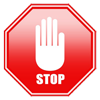If you, like me, grew up with the “history” taught in standard school text books and whatever Hollywood has injected into popular culture a.k.a. the collective conscious, then you, like me, have probably been misinformed about quite a number of facts of history. The cliché that history is whatever the winners decide to write might hold true, but add the dynamic of Eurocentrism and things get worse. Rampant misinformation abounding in the “Information Age.” But theories as to the sources of such disinformation aside, let’s set the record straight on some of these so-called facts:
Q. Who was the first man to fly solo across the Atlantic?
Q. Who was the first man to fly a fixed-wing aircraft across the Atlantic?
Q. Who was the first man to fly non-stop across the Atlantic?
Q. Who was the first man to fly in a heavier-than-air machine across the Atlantic?
A: If you answered “Charles Lindbergh” to any of the above, then you, along with millions of people around the world, have been misinformed. For more information, please see: Charles Lindberg: far from being the first.
Q: Who invented the telephone?
A: If you answered “Alexander Graham Bell,” then you, along with millions of people around the world have been misinformed. Even the U.S. Congress got involved in 2002, declaring that the real inventor wasn’t Bell. The original telephone was invented by an Italian with the name of Antonio Meucci. And telephone as we know it today, is largely based on improvements made by Thomas Edison on the original design. For further reading: Who invented the telephone?
Q. Who discovered Angkor—a series of temple sites in Cambodia, the most famous of which is Angkor Wat?
A: If you answered “Henri Mouhot” or thought it was an European explorer hacking his way through the jungles who stumbled upon lost ruins which came to be hailed as one of the Great Wonders of the Ancient World, then you, along with millions of people around the world have been very misinformed. Please see Angkor and Henri Mouhot: myths about the discovery of Angkor.
Q. How many casualties were there in World War II?
A. If you answered “40 million,” then you, along with millions of people around the world, have been misinformed.
The oft-quoted figure of 40,000,000 killed in World War II does not include any of the casualties in Asia. In China alone, 35 million people were killed. For the Chinese, WW2 started in 1931. But in the West, it was known as the “Second Sino-Japanese War,” which later merged into the Second World War which ended in 1945. The death toll between 1939 and 1945, in China alone, was about 20,000,000, not counting Japan or the rest of Asia, where an additional 15,000,000 died during that period.
Incidentally, it was the West's betrayal of China through the 1919 Treaty of Versailles which led to the eruption of WW2 in the East. For further reading, see The Chinese Labour Corps (CLC).
Excerpts from My Life as a Squint-Eyed Chink:
“As the Holocaust is for Jews, the Rape of Nanking is imprinted on the collective memory of the Chinese. Even born in England, I had not been spared. In school, I had noticed the discrepancy: western history books claim that forty million people died in World War II, but that oft-quoted figure did not include any of the thirty-five million Chinese killed. Why?
“Like most children in the West, I was familiar with the prevailing information about Hitler and the deeds of the Nazis: the concentration camps, the Holocaust and the Nuremberg Trials. However, when I began looking into the Sino-Japanese War, I learned that by 1939—years before the Jewish Holocaust was fully underway—the Japanese had ignored the Geneva Protocol of 1925 by systematically waging gas and biological warfare on major cities like Shanghai, exposing large civilian populations to germs, chemicals and venoms. The Japanese had also interned Jews and conducted experiments on the Chinese populace that would have put Mengele to shame. But most shameful of all, the US, under General MacArthur’s leadership, granted Japanese war criminals immunity from prosecution in exchange for data gleaned from their biological-warfare research [carried out through Unit 731]. There never was an equivalent of the Nuremberg Trials for the Japanese, just small-scale prosecutions [that were eventually called off].
“[Few people know that] Prior to [the Dec. 7 1941 attack on] Pearl Harbor, during the isolationist period, before its official entry into the war against Japan, the US was already allied with China; yet references to ‘the Allies’ in World War II terminology is not generally understood to include China. American squadrons were secretly flying missions in China to guard Allied supply lines and volunteer airmen were assigned to train [Chinese pilots.] [Few people know about the] 60,000 American servicemen and women who actually served [in China].
“... When the movie Pearl Harbor told the little-known story of Doolittle and his daring April 1942 raid on Tokyo, omitted was the part about the 250,000 Chinese civilians killed in retaliation for aiding the handful of American pilots who had deliberately crash-landed in occupied China. The pilots had assumed correctly that the Chinese populace would help them to safety. As a result, 10,000 civilians were killed for every 1 pilot saved. Yet, even though they were inextricably linked to the story of the pilots, they not given so much as an honorable mention in the ending credits.”
©Zak Keith, 2009






